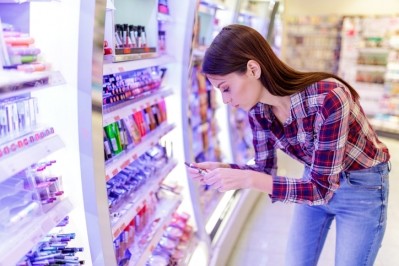Images: Getty Data analytics firm Euromonitor International has unveiled the top trends it predicts will influence the beauty and personal care industry next year and beyond. We’ve outlined three of these here…
Each year Euromonitor analyses its current data and societal patterns to forecast the topics that are likely to be prominent over the next year and beyond.
Here we outline three of the trends that are set to impact the beauty and personal care industry in 2025 and beyond.
#Trend 1 Healthspan plans
The data firm said that consumers are “on their longevity journeys” and now making behavioural changes to help them live healthier lives for longer.
It shared various data research on this topic, including that 52% of consumers believed they would be healthier in the next five years and that 54% of consumers knew which vitamins and supplements to take for health concerns in 2024.
As such, global sales for VMS are projected to reach $139.9bn in 2025, driven by ageing population, a ‘hangover’ from Covid and more educational resources and tech advancements.
It also flagged that there has been a consistent increase in the use of smart devices or apps to track health across all generations, with Gen Z and Millennials as the earliest adopters.
Euromonitor also noted that there is a growth for niche spaces within this wider health and wellness category. For example, it said that 34% of women took VMS to prevent menopause-related symptoms.
Its findings showed that that products with science-backed evidence continued to gain traction, for example, NAD+ supplements that target cellular health.
The number of online SKUs labelled NAD+ nearly tripled across consumer health categories from 409 in 2023 to 1,137 as of August 2024. While online launches of brands with ‘cellular health’ claims grew 135% in the vitamins and supplements category between Q1 and Q2 2024 across 32 countries.
Based on its findings, the firm advised beauty and personal care brands to:
- “Develop targeted self-care products and tailor solutions to address specific, life-stage concerns or unmet needs.”
- “Use scientific evidence or proven results in your marketing materials to underscore how formulations, devices or designs support longevity.”
- “Partner with tech companies or diagnostics firms to offer personalised health assessments and real-time tracking solutions.”

#Trend 2 Wiser wallets
“Prolonged economic uncertainty has created new spending norms,” said Euromonitor’s trends team, adding that “temporary shifts to relieve financial strain have become embedded into consumption habits.”
Long-term economic uncertainty has created new spending norms, even as global inflation eases to 4.2% in 2025. The firm said that shopping has become more strategic, and that people now generally weigh the worth of their purchases against their priorities.
To reach consumers, Euromonitor said that companies can respond with solutions that convey clear benefits and tangible, useful incentives to remain top of mind for their target audience.
Its data highlighted that nearly half of consumers planned to put more money into savings in 2024 and 72% were concerned about the rising cost of everyday items. Yet, 50% were also willing to spend money to save time.
It appears that purchase decisions are now highly intentional. Euromonitor said that 57% of consumers have extensively researched products or services and only 18% said they often made impulse purchases in 2024.
These shoppers are also considering how a product or service could solve an immediate need and also provide benefits down the line. Therefore, this means that cost-effective options aren’t always the preferred choice.
The business expects that premium options will grow faster than standard or economy price tiers in certain regions like Western Europe and Latin America, but not others. And that overall, consumers are focused on all-around value and expect brands to deliver meaningful incentives with long-term impact.
“Brands that demonstrate credible added value stand to gain from this trend,” it said.
“Quality, functionality, convenience and price are all factors that influence purchase decisions,” it continued and highlighted that private label brands across several consumer goods sectors saw some of the largest retail sales gains compared to other category players in recent years.
On this note, it’s also relevant that 48% of brands incorporated experiential rewards into their loyalty programmes as of Q2 2024 and that three out of five Millennials said they had paid for a loyalty programme subscription in 2024 compared to half of
Generation Z and less than one third of Baby Boomers.
Euromonitor outlined three tactics for brands to stay ahead of the game for this trend. It said:
- “Develop campaigns for segments of your audience to convey relevant, specific benefits.”
- “Connect the priorities of your target audience to your value proposition to demonstrate the credible added value of your products or services.”
- “Offer short- and long-term incentives that complement your offer but are also useful for your customers to drive loyalty.”

#Trend 3 Eco logical
According to Euromonitor, trust in sustainability product claims has not wavered over the years, but affordability continues to be the top barrier affecting purchasing decisions.
In recent years, more economical options have been favoured over greener ones that were more expensive.
“Sustainability claims require tangible evidence,” said the firm. “Brands can’t rest on green laurels alone. You’ll need to match the right claims with the right products for the right audience to convince consumers to pick eco-friendly options.”
However, consumers haven’t necessarily stepped away from sustainability, as Euromonitor’s data showed that 60% of those quizzed had tried to have a positive impact on the environment in 2024: a figure that’s remained consistent since 2020. While nearly two thirds are worried about climate change.
Another 63% of consumers said they have tried to have a positive impact on the environment through their everyday actions.
The firm said that trust in green labels hasn’t wavered over the years, but affordability continues to be the top barrier to purchase decisions, with 40% of consumers stating that high price stopped them from buying a green alternative.
It appears that people are taking a more pragmatic approach to sustainable consumption where green attributes are often seen as essential complementary benefits but not the sole motivator.
“Green attributes should directly link to a product proposition or other benefits to help address specific consumer needs alongside their values-driven preference for such alternatives,” said Euromonitor’s trend team.
It continued: “The Eco Logical trend is about creating a trifecta: the right claims on the right products for the right audience. Sustainability is no longer just a brand-enhancing requirement but a prerequisite for innovation that drives growth.”
The firm highlighted that sustainable product development isn’t slowing down and that the number of online SKUs with ‘sustainability’ claims across 11 FMCG industries in 25 countries increased from four million in Q2 2022 to five million in Q2 2024.
It also flagged that retail sales of products with sustainability claims trended upwards between 2020 to 2023. And that brands with a tangible sustainable proposition saw a 1.5% higher growth rate over the same period compared to non-sustainable equivalents.
In terms of the beauty and personal care industry, brands in this category have made a marked effort to enhance offers in this space where products with sustainability claims generated more than $120bn in 2023: the highest industry by sales.
For this trend, Euromonitor made three suggestions for brands. It said:
- “Use sustainability claims that emphasise the value proposition of your product; connect these features to purchase driver-like efficacy, quality or safety.”
- “Focus product development efforts on attributes with strong growth in your category and market.”
- “Incorporate sustainability into products or services that are familiar to your target audience for easier adoption.”


